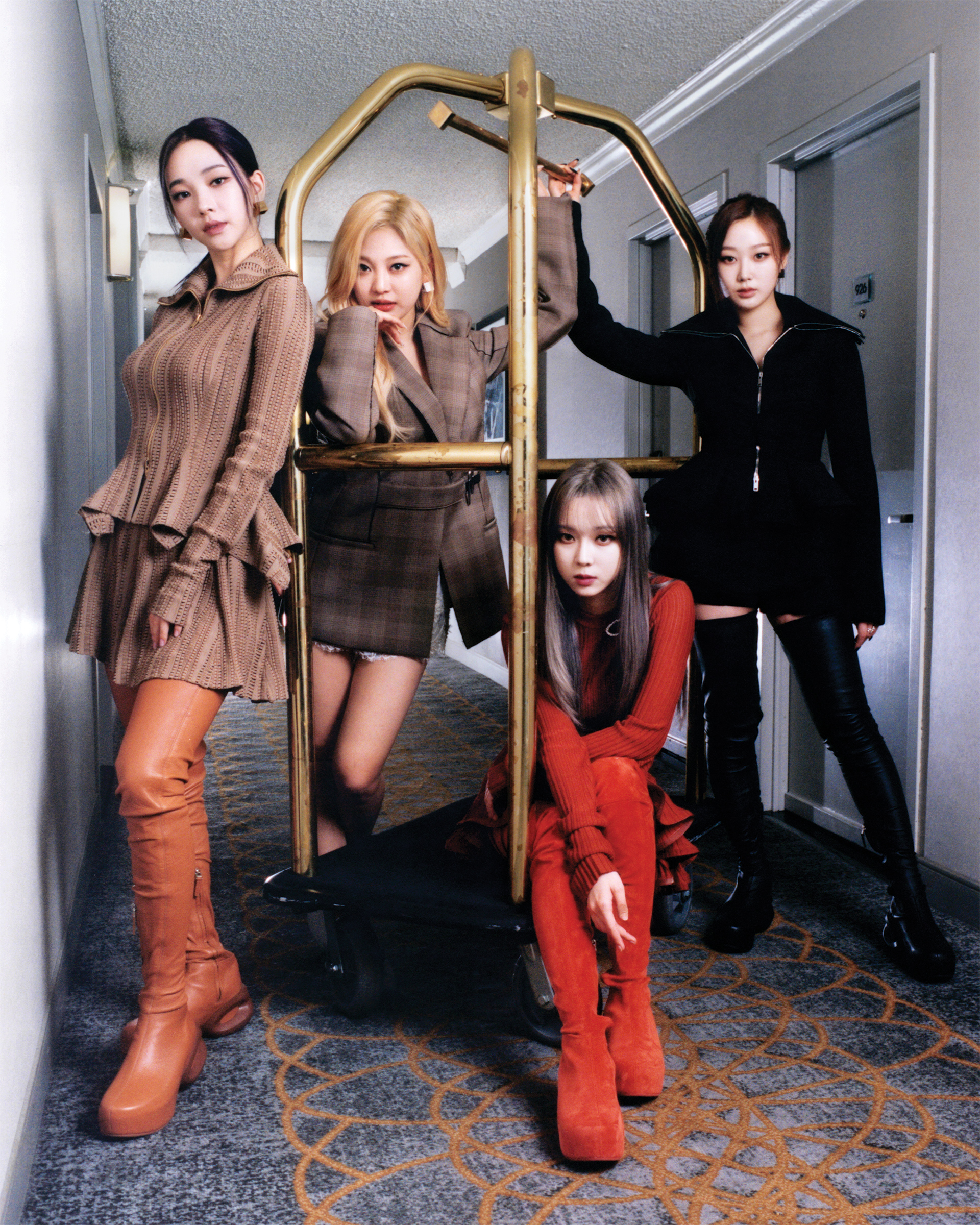Giselle, Karina, Ningning, and Winter should be tired. They just arrived in California after a long-haul flight from Seoul, after all. But the four stars of the K-pop girl group aespa have an important job to do—and they know the stakes. For one of the first times in their short career, they are performing for a live audience. And not just on any stage: the much hyped Coachella. Having launched in the thick of the pandemic in November 2020, aespa has only existed in a world in crisis. But there’s something that sets them apart: aespa also exists as four virtual avatars, each carefully crafted to match their human counterpart, in a fantastical metaverse, Now, they’re ready to prove they’re more than just what fans have seen on screens.
Quiet and focused, the four women of aespa sit lined up on a couch in a small hotel room where they have congregated for a pre-Coachella photo shoot. It can be disconcerting to see them without their avatars, which appear in photos and videos alongside their real-life inspirations. The uninitiated viewer might do a double take. Aespa is an experiment, but it may also be the inevitable next step for the music industry: a fresh way to bridge the virtual and the real. So far, aespa has released only a few singles and one six-song EP—but that EP broke records, debuting on the Billboard 200 album chart higher than any previous K-pop girl group. Their first music video, “Black Mamba,” had YouTube’s fastest climb to 100 million views for a K-pop debut.

But the members of aespa are keen to be seen as more than just another group. Their “metaversal origin story,” as Karina calls it, is meant to capture the imagination. The story of aespa, designed and launched by their Korean talent-management agency, SM Entertainment, is an ambitious new piece of the SM Culture Universe. Like Marvel or DC Comics, the company is creating an interconnected world in which all of its artists will exist—with complex backstories, narrative arcs, villain threats, and more. It is still something of a sketch. “Truthfully, we were worried in the beginning, because this concept of ours is something new to our company as well,” says Ningning. “But our fans really loved it and are even creating memes out of it.”
The result: aespa is learning the concept of metaverse-native artistry at the same time as its fans—each song and video another piece in the puzzle. The goal is to “normalize metaverse concepts and have our fans and other people be a little more comfortable with the whole idea of it,” Giselle says. It’s a journey that fans can go on by taking the time to watch aespa’s videos and consume their content, beyond just enjoying the songs. They want to make people think—about the selves we present online, and about the ways we interact with our virtual identities.
A few days later, Giselle, Karina, Winter, and Ningning climbed the Coachella stage in combat boots and miniskirts, with 10 minutes’ worth of music and choreography. Their avatars flashed on the screen behind them, but the focus was on the performers. The metaverse may be part of our inevitable collective future, but aespa is working on conquering this world first.
—With reporting by Soo Jin Kim/Seoul
More Must-Reads from TIME
- Cybersecurity Experts Are Sounding the Alarm on DOGE
- Meet the 2025 Women of the Year
- The Harsh Truth About Disability Inclusion
- Why Do More Young Adults Have Cancer?
- Colman Domingo Leads With Radical Love
- How to Get Better at Doing Things Alone
- Michelle Zauner Stares Down the Darkness
Write to Raisa Bruner at raisa.bruner@time.com